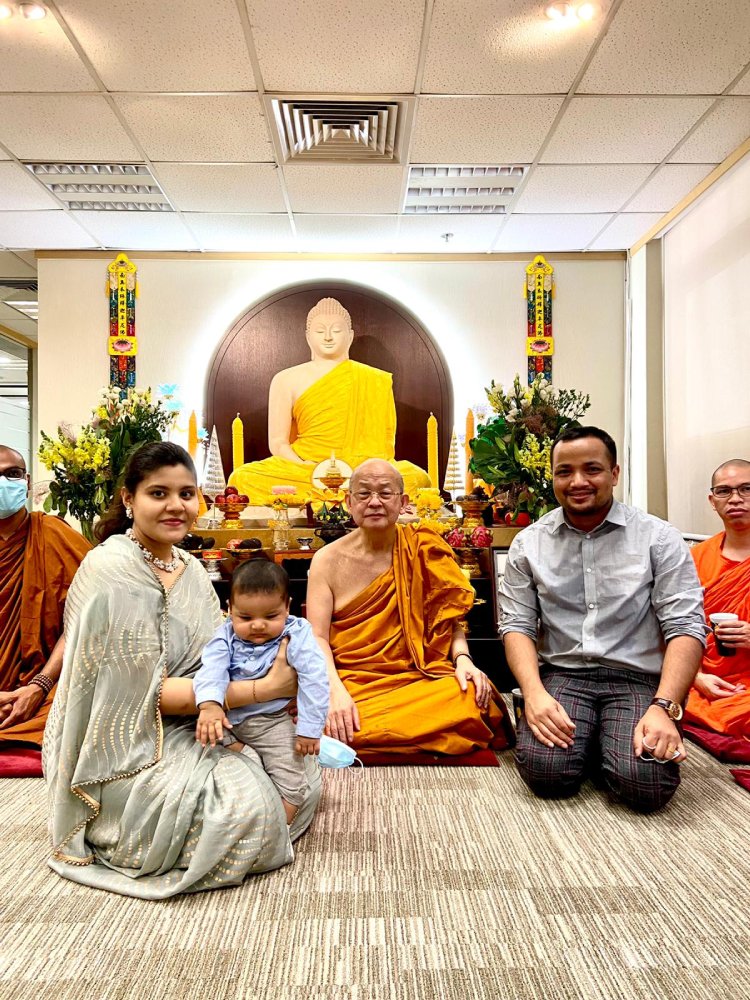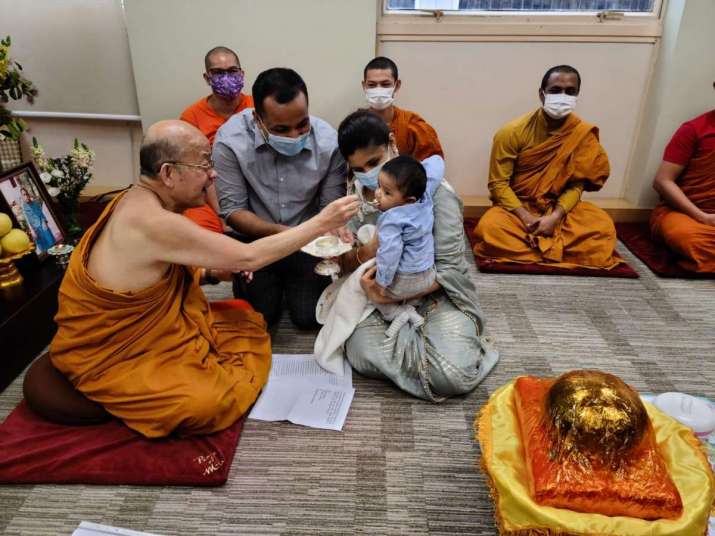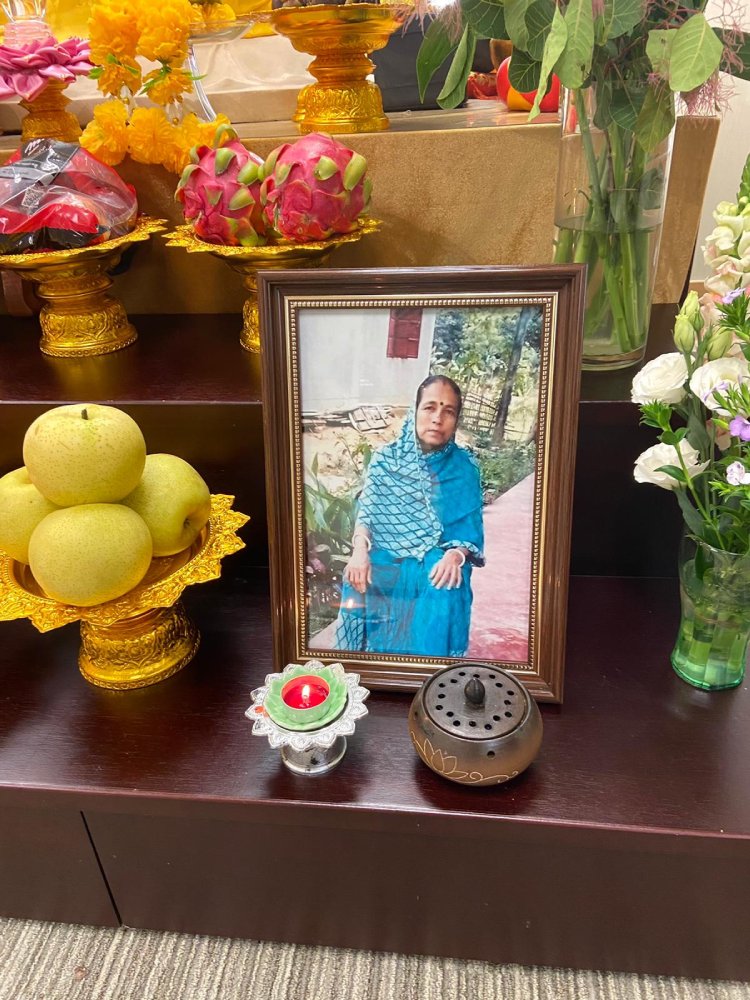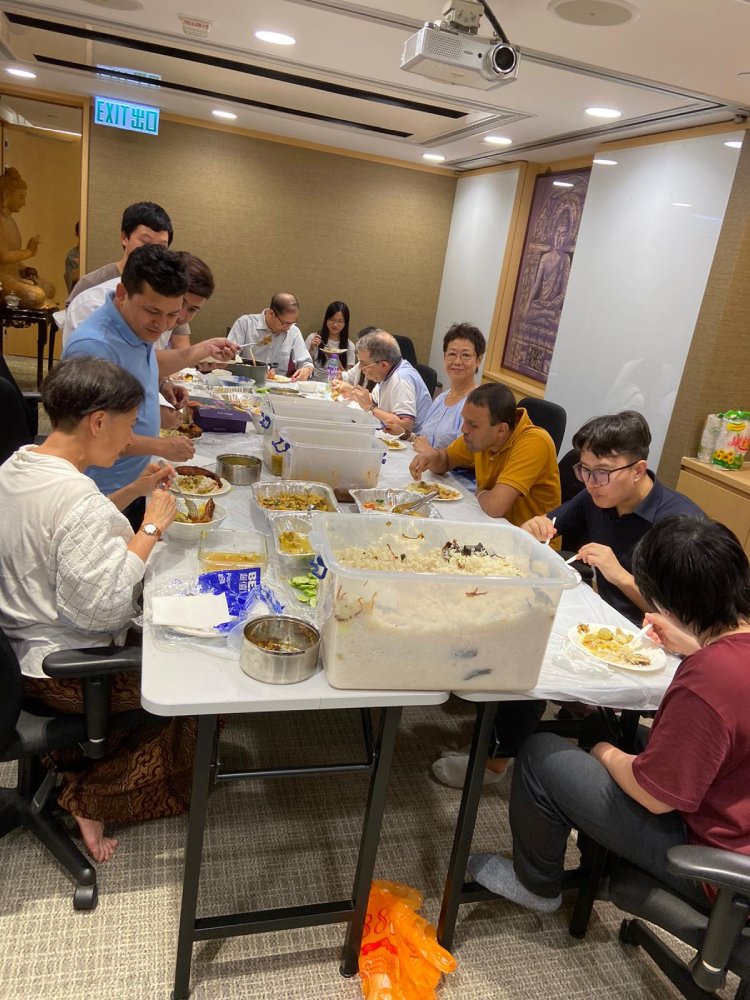FEATURES|THEMES|Festivals and Teachings
From Bangladesh to Hong Kong: Connecting Buddhist Cultures through the Tradition of Annaprashan
As a Bangladesh-born Buddhist, writing for Buddhistdoor Global has felt like a cross-cultural venture. I came into contact with Buddhistdoor Global years ago when I moved to Hong Kong to earn a doctorate in Buddhist Studies at the University of Hong Kong. My writing has often attempted to highlight to international readers the history and present situation of Buddhism in my home country.
Recently, I had the opportunity to “bring” to Hong Kong a Buddhist ritual that is not commonly known among the Chinese Buddhist (or more generally Mahayana) community. This is the rite of feeding a baby their first solid food (annaprashan), which we performed for my son Tijil Barua Troy on 15 August.
Annaprashan literally means “food feeding” or “the eating of food.” In Bengali, this is called “mukhe bhat,” and it marks the first solid food journey in a baby’s life after breast milk. Following this ceremony, the baby is given solid food as well as breast milk. In Bangladesh and most parts of South Asia, Hindus perform this ceremony as a Vedic ritual. However, this ceremony is also culturally popular among Bangladeshi Buddhists.
The ceremony is usually held when the baby is six months old. According to tradition, the baby should begin eating solid food before their teeth emerge. Although the historical reason for this is unknown, from a societal perspective, a baby’s liquid food or milk is seen as not meeting their increasing nutritional needs after six months. In Indic cultures, the end of six months indicates that a baby is now capable of eating solid meals.

Photo by the author
My wife and I were fortunate to be able to hold this event at the Buddha-Dharma Centre of Hong Kong (BDCHK), which was founded and is still led by my longtime mentor Ven. Prof. K. L. Dhammajoti. The event was combined with another ritual called atthaparikkhara dana, which is an offering of eight items to a small assembly of monks. This ritual was to commemorate the fifth year since my mother, Juti Bala Barua, passed away. We will discuss the atthaparikkhara dana below.
Our ceremony was presided over by Ven. Dhammajoti, who was joined by six monks from Bangladesh and Sri Lanka. Around 40 people, many of them local Hong Kong friends, joined us for our baby’s life milestone. Ven. Dhammajoti first gave a Dhamma talk about the importance of continuity and tradition. As lay practitioners, we pledged to observe the five precepts—to refrain from taking life, stealing, sexual misconduct, lying, and intoxicants. The ceremony was then marked by a long period of chanting and paying homage to the Buddha, the Dhamma, and the Sangha. This was followed by offerings of food, flowers, incense, lamps, and of the eight requisites of a monastic. We then shared the accumulated merit with friends, relatives, and all sentient beings.
The session concluded shortly before noon, and by Ven. Dhammajoti personally fed solid food to our son Tijil Barua. As the food was given, we all chanted “sadhu, sadhu, sadhu,” a Pali word meaning “good,” “excellent,” or “auspicious.”
Bangladeshi Buddhists usually arrange the food feeding ceremony at home or in a Buddhist temple. Although it is customary for the maternal uncle to give the first rice grains to the sister’s child, nowadays monks give the first food to the baby’s mouth as an auspicious sign for the baby.
 Ven. Dhammajoti feeds Tijil Barua Troy his first solid food. Photo by the author
Ven. Dhammajoti feeds Tijil Barua Troy his first solid food. Photo by the authorParents or elders of the family decide a good day for this event and on the day itself, the baby is dressed in new clothes. Some religious practices, such as making offerings to monks, are observed for the sake of the baby’s health, well-being, and prosperity. The occasion is also regarded as a reunion for loved ones in a family following the birth of the child.
In Bangladesh, Buddhists usually give milk rice as the first solid food, representing Sujata’s offering of sustenance to the ascetic Siddartha Gautama thousands of years ago. According to Buddhist tradition, while Gautama sat in meditation under a tree, Sujata offered milk rice, which revived his deteriorating strength and spurred him to pursue a Middle Way between indulgence and self-denial. Sujata’s offering was the last meal he had before he attained supreme enlightenment.
The atthaparikkhara is a set of eight items that includes three types of robes, a belt, a needle and thread, an alms bowl, a cloth water filter, and a shaving knife. According to the Theravada Buddhist tradition, the fruits of offering these three kinds of robes include having a golden body, clean skin free of dust and dirt, the body being like the scattering of light, having clothes whenever needed, and becoming a monk and achieving enlightenment in this lifetime.
The fruits of offering the belt are as follows: the devotee gains the ability to exercise discernment, lives longer, has a fearless heart, and he can easily concentrate his mind. The fruits of offering the needle and thread include: being free from doubt, being able to dispel the doubts of others, being wealthy, being entitled to the knowledge of the ultimate truth, being able to easily understand mysterious and complex issues, attaining the path of merit by cutting off ignorance, and being intelligent, sharp, and wise.
The fruits of offering the alms bowl include: gaining gold, silver, lapis lazuli, and other precious things, being free of obstacles, being free of diseases and enemies, receiving worship from gods and humans, and having an active mind.

An image of Juti Bala Barua at the ceremony.
Photo by the author
The fruits of offering the cloth water filter are as follows: a lifetime in the world of devas that is longer than that of other deities, protection from torture by thieves and enemies, protection from knives and guns, protection from the amputation of limbs, and lasting health.
The fruits of offering the shaving knife include: being free from harassment, living a happy life, gaining relatives, friends, and disciples, tranquillity of mind, never being poor, and being able to talk about anything in a detailed manner.
After such offerings to the sangha, one should share the generated merit with departed relatives, and if any of them were born as hungry ghosts due to their unwholesome kamma, they will benefit from divine clothing, food, and other necessities.
People have been making offerings to the sangha and sharing accrued merits for the sake of deceased loved ones since the Buddha’s time. According to the Tirokudda Sutta (Discourse on Hungry Shades Outside the Wall) of the Petavatthu in the Khuddaka Nikaya, after attaining enlightenment, the Buddha went to Rajagriha in the Magadh region, where the king, Bimbisara, had invited him. The Buddha and his monks came to receive the king’s alms. That night, however, Bimibsara was frightened by inhuman sounds and in the morning asked the Buddha what could have happened.
The Buddha replied: “Your forefathers were reborn as hungry ghosts (pretas) for a long time. Despite making offerings to the sangha, you have not shared merits with them in order to free them from such a woeful state. That is why they were angry with you.” The king asked what he could do, and the Buddha instructed him to share them merits by giving alms and cloths to the sangha.
The next day, King Bimbisara re-donated food and clothes to the Sangha and shared his accumulated merit with his forefathers by uttering: “idaṃ me ñātinaṃ hotu sukhitā hontu ñātayo!” “May this [merit] be for our relatives, may they be happy!” Accordingly, those hungry ghosts received divine clothes, mansions, couches, covers, and ornaments, and were accordingly appeased and retreated from Bimbisara's palace.

Guests are served lunch after the ceremony. Photo by the author
According to the Theravada tradition, such wholesome deeds should be performed in memory of the loved one who has died, so that they can enjoy the merit that propels them toward a favourable rebirth. The Tirokudda Sutta assures us that what is given benefits the dead in the same way that rain falls onto a hill and flows down into the valley, or how rivers fill the ocean with their water.
The annaprashan ceremony was an emotional one for me, since I miss my mother dearly, but I am also delighted by the presence of my little boy each day. I received a sense of closure and reassurance from the ceremony, as it was fully imbued with my home country’s religious and cultural traditions, with monks providing spiritual guidance to the participants. Furthermore, while living in Hong Kong, I have received the support of Buddhist friends and well-wishers of all traditions and backgrounds. Living, working, and practicing Buddhism among both local and international friends here has broadened my horizons in a way I never thought possible and will always feel grateful for.
Related features from Buddhistdoor Global
Buddhist Spiritual Care
Adornment as Offering — The Felted Jewelry of Iva Hladis
Saying Goodbye to My Mother: How Buddhists Hold Funeral Rites in Bangladesh














